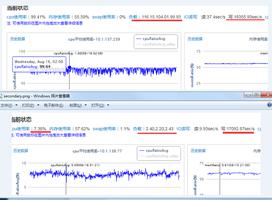Linux--部署Django+DRF+vue项目

前戏
在nginx里已经部署了前端项目,现在还需要部署后端项目
后端项目使用django+DRF,虚拟环境用的 pipenv
配置数据库,安装依赖环境等省略
部署
拉取最新的代码
git pull origin master
进入虚拟环境
pipenv shell
安装uwsgi
[root@HH ManageSystem]# pipenv install -i https://pypi.douban.com/simple uwsgi
ManageSystem为我的django项目名,表明我现在在项目的根目录下。
查看版本,注意要在虚拟环境里执行
(ManageSystem) [root@HH ManageSystem]# uwsgi --version2.0.19.1
启动项目测试,ManageSystem为你的项目名
(ManageSystem) [root@HH ManageSystem]# uwsgi --http :8081 --module ManageSystem.wsgi
postman访问接口测试
配置nginx
部署VUE项目后的配置文件
#user nobody;worker_processes 1;
#error_log logs/error.log;
#error_log logs/error.log notice;
#error_log logs/error.log info;
#pid logs/nginx.pid;
events {
worker_connections 1024;
}
http {
include mime.types;
default_type application/octet-stream;
#log_format main '$remote_addr - $remote_user [$time_local] "$request" '
# '$status $body_bytes_sent "$http_referer" '
# '"$http_user_agent" "$http_x_forwarded_for"';
#access_log logs/access.log main;
sendfile on;
#tcp_nopush on;
#keepalive_timeout 0;
keepalive_timeout 65;
#gzip on;
server {
listen 80;
server_name localhost;
#charset koi8-r;
#access_log logs/host.access.log main;
location / {
root /opt/ManageSystemWeb;
try_files $uri $uri/ /index.html;
index index.html index.htm;
}
#location /pro-api{
# proxy_pass http://mengxuegu.com:7300/mock/5db437d92aa750460d4fce18;
#}
#error_page 404 /404.html;
# redirect server error pages to the static page /50x.html
#
error_page 500 502 503 504 /50x.html;
location = /50x.html {
root html;
}
# proxy the PHP scripts to Apache listening on 127.0.0.1:80
#
#location ~ \.php$ {
# proxy_pass http://127.0.0.1;
#}
# pass the PHP scripts to FastCGI server listening on 127.0.0.1:9000
#
#location ~ \.php$ {
# root html;
# fastcgi_pass 127.0.0.1:9000;
# fastcgi_index index.php;
# fastcgi_param SCRIPT_FILENAME /scripts$fastcgi_script_name;
# include fastcgi_params;
#}
# deny access to .htaccess files, if Apache's document root
# concurs with nginx's one
#
#location ~ /\.ht {
# deny all;
#}
}
# another virtual host using mix of IP-, name-, and port-based configuration
#
#server {
# listen 8000;
# listen somename:8080;
# server_name somename alias another.alias;
# location / {
# root html;
# index index.html index.htm;
# }
#}
# HTTPS server
#
#server {
# listen 443 ssl;
# server_name localhost;
# ssl_certificate cert.pem;
# ssl_certificate_key cert.key;
# ssl_session_cache shared:SSL:1m;
# ssl_session_timeout 5m;
# ssl_ciphers HIGH:!aNULL:!MD5;
# ssl_prefer_server_ciphers on;
# location / {
# root html;
# index index.html index.htm;
# }
#}
}
View Code
在配置nginx之前,先创建一个 uwsgi.ini 的文件,和 manage.py 文件同级
里面内容如下
[uwsgi]#项目的绝对路径,定位到项目的第一层
chdir = /opt/ManageSystem
#指明项目的wsgi文件路径
module =ManageSystem.wsgi
#指明你的虚拟解释器的第一层路径
home = /root/Envs/ManageSystem-t7qCu0Kd
#指明通过uwsgi,启动多少个进程
processes = 5
#如果你已经配置了nginx(启动了nginx服务,配置了uwsgi_pass),请用这个socket连接
socket = 0.0.0.0:8082 # 使用这个,将下面的http注释掉
#如果你没用nginx,想通过uwsgi直接启动web服务,指明http协议
#http = 0.0.0.0:9999
#在退出uwsgi环境后,清空环境变量
vacuum = true
home = /root/Envs/ManageSystem-t7qCu0Kd 可以使用 pipenv --venv 查看
socket = 0.0.0.0:8082 这个的端口不是你接口的端口,和nginx里的代理均衡的一样
配置好 uwsig.ini之后再来配置 nginx
[root@HH conf]# vim nginx.conf
完整的配置如下
#user nobody;worker_processes 1;
#error_log logs/error.log;
#error_log logs/error.log notice;
#error_log logs/error.log info;
#pid logs/nginx.pid;
events {
worker_connections 1024;
}
http {
include mime.types;
default_type application/octet-stream;
#log_format main '$remote_addr - $remote_user [$time_local] "$request" '
# '$status $body_bytes_sent "$http_referer" '
# '"$http_user_agent" "$http_x_forwarded_for"';
#access_log logs/access.log main;
sendfile on;
#tcp_nopush on;
#keepalive_timeout 0;
keepalive_timeout 65;
#gzip on;
server {
listen 80;
server_name localhost;
#charset koi8-r;
#access_log logs/host.access.log main;
location / {
root /opt/ManageSystemWeb;
try_files $uri $uri/ /index.html;
index index.html index.htm;
}
#location /pro-api{
# proxy_pass http://mengxuegu.com:7300/mock/5db437d92aa750460d4fce18;
#}
#error_page 404 /404.html;
# redirect server error pages to the static page /50x.html
#
error_page 500 502 503 504 /50x.html;
location = /50x.html {
root html;
}
# proxy the PHP scripts to Apache listening on 127.0.0.1:80
#
#location ~ \.php$ {
# proxy_pass http://127.0.0.1;
#}
# pass the PHP scripts to FastCGI server listening on 127.0.0.1:9000
#
#location ~ \.php$ {
# root html;
# fastcgi_pass 127.0.0.1:9000;
# fastcgi_index index.php;
# fastcgi_param SCRIPT_FILENAME /scripts$fastcgi_script_name;
# include fastcgi_params;
#}
# deny access to .htaccess files, if Apache's document root
# concurs with nginx's one
#
#location ~ /\.ht {
# deny all;
#}
}
# another virtual host using mix of IP-, name-, and port-based configuration
upstream Api {
server 127.0.0.1:8082;
}
server {
listen 8081;
server_name localhost;
location / {
uwsgi_pass Api;
include /opt/nginx1-16/conf/uwsgi_params;
}
}
# HTTPS server
#
#server {
# listen 443 ssl;
# server_name localhost;
# ssl_certificate cert.pem;
# ssl_certificate_key cert.key;
# ssl_session_cache shared:SSL:1m;
# ssl_session_timeout 5m;
# ssl_ciphers HIGH:!aNULL:!MD5;
# ssl_prefer_server_ciphers on;
# location / {
# root html;
# index index.html index.htm;
# }
#}
}
nginx.conf
检查nginx配置文件,加载配置文件,重启nginx
[root@HH conf]# cd ../sbin/[root@HH sbin]# ./nginx -t # 检查配置文件的语法
nginx: the configuration file /opt/nginx1-16//conf/nginx.conf syntax is ok
nginx: configuration file /opt/nginx1-16//conf/nginx.conf test is successful
[root@HH sbin]# ./nginx -s reload # 加载配置文件
[root@HH sbin]# ./nginx # 重启nginx
nginx: [emerg] bind() to 0.0.0.0:80 failed (98: Address already in use)
nginx: [emerg] bind() to 0.0.0.0:8081 failed (98: Address already in use)
nginx: [emerg] bind() to 0.0.0.0:80 failed (98: Address already in use)
nginx: [emerg] bind() to 0.0.0.0:8081 failed (98: Address already in use)
nginx: [emerg] bind() to 0.0.0.0:80 failed (98: Address already in use)
nginx: [emerg] bind() to 0.0.0.0:8081 failed (98: Address already in use)
nginx: [emerg] bind() to 0.0.0.0:80 failed (98: Address already in use)
nginx: [emerg] bind() to 0.0.0.0:8081 failed (98: Address already in use)
nginx: [emerg] bind() to 0.0.0.0:80 failed (98: Address already in use)
nginx: [emerg] bind() to 0.0.0.0:8081 failed (98: Address already in use)
nginx: [emerg] still could not bind()
启动uwsgi.ini
(ManageSystem) [root@HH ManageSystem]# uwsgi --ini uwsgi.ini
访问接口
这样启动的只是在前台运行,当窗口关闭之后,就访问不了了,我们使用nohup在后台运行
(ManageSystem) [root@HH ManageSystem]# nohup uwsgi --ini uwsgi.ini &
注意:在当shell中提示了nohup成功后,还需要按终端上键盘任意键退回到shell输入命令窗口,然后通过在shell中输入exit来退出终端;如果在nohup执行成功后直接点关闭程序按钮关闭终端的话,这时候会断掉该命令所对应的session,导致nohup对应的进程被通知需要一起shutdown,起不到关掉终端后调用程序继续后台运行的作用。
以上是 Linux--部署Django+DRF+vue项目 的全部内容, 来源链接: utcz.com/z/380698.html



